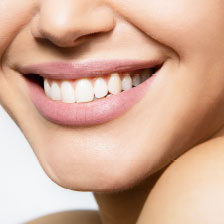 Tooth discoloration can come in extrinsic form, or intrinsic form. Typically, when people think about what can affect the color of their teeth, they think about extrinsic stains. These are the stains in your enamel that can come from certain foods and beverages, as well as from using tobacco products. However, other people suffer from intrinsic discoloration, or discoloration that resides in deeper layers than the extrinsic stains. These issues can result from physical trauma, or from taking certain medications. Teeth whitening treatments eliminate extrinsic stains, but can be less effective when discoloration is intrinsic. Your dentist can examine your teeth and help you know if conventional whitening will serve your needs.
Tooth discoloration can come in extrinsic form, or intrinsic form. Typically, when people think about what can affect the color of their teeth, they think about extrinsic stains. These are the stains in your enamel that can come from certain foods and beverages, as well as from using tobacco products. However, other people suffer from intrinsic discoloration, or discoloration that resides in deeper layers than the extrinsic stains. These issues can result from physical trauma, or from taking certain medications. Teeth whitening treatments eliminate extrinsic stains, but can be less effective when discoloration is intrinsic. Your dentist can examine your teeth and help you know if conventional whitening will serve your needs.
How Teeth Whitening Works
Your dentist can perform a teeth whitening treatment in the office, or they can provide you with the necessary materials for you to whiten your teeth at home. For an at-home treatment, you will receive a custom mouth guard, and a supply of a prescription-strength whitening agent. In most cases, you should apply the whitening agent to your teeth daily, for approximately two weeks. If you elect to receive an in-office treatment, your dentist will safely apply the whitening product to your teeth, and use a special curing light to attain fast results.
Alternative Approaches To Enjoying Whiter Teeth
If your teeth have stains that are less responsive to standard whitening treatment, alternative approaches do exist. You can have porcelain veneers placed on your teeth, which permanently cover their discoloration, as well as hide any other flaws with their appearance. If you have a single discolored tooth after an injury, dental bonding can make it appear the same color as neighboring teeth.







